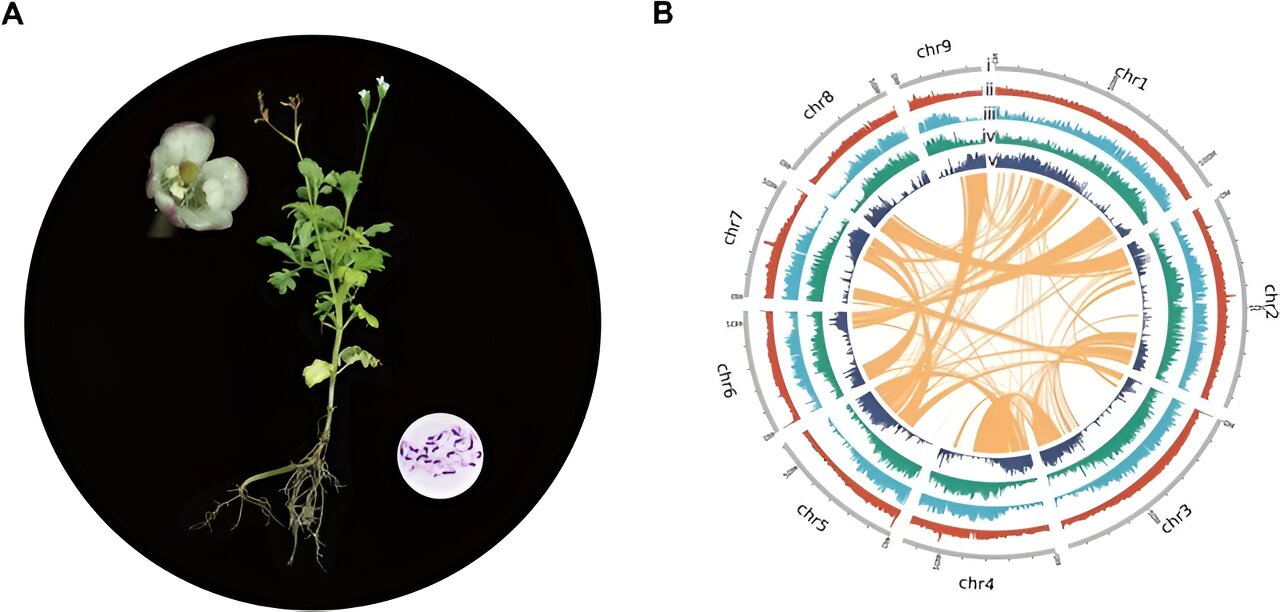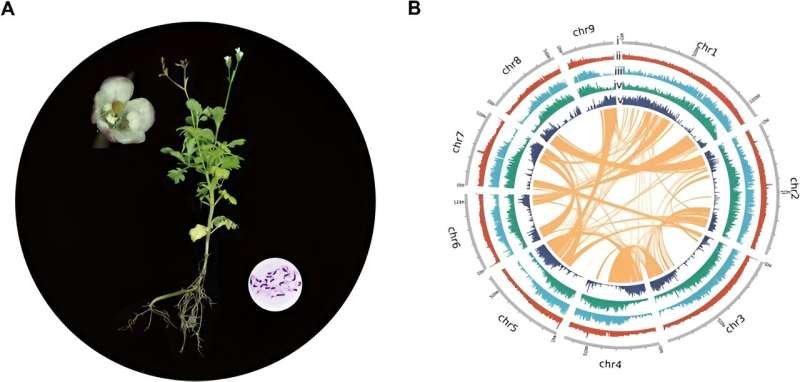

Alpine habitats present extreme challenges, including low temperatures, high UV radiation, and limited oxygen levels, which demand unique adaptations from the plants that inhabit these regions. Despite their ecological importance, the genetic mechanisms behind these adaptations are not well understood.
Studying these mechanisms is crucial because it can lead to insights into plant resilience and survival strategies under environmental stress. Due to these challenges, it is imperative to conduct in-depth research to uncover the genetic and physiological adaptations that enable plant survival in such harsh conditions.
Researchers from the Chinese Academy of Sciences and other institutions have published a study on May 1, 2024, in Horticulture Research, that unveils the genomic adaptations of the alpine plant Triplostegia glandulifera. The study provides a comprehensive analysis of how this plant copes with the harsh conditions of high-elevation environments.
The study presents a detailed genome assembly of T. glandulifera and compares it with the lowland species Lonicera japonica. Researchers discovered a whole-genome duplication event in T. glandulifera, which increased the number of cold-related genes, enhancing the plant’s ability to withstand cold stress. Key genes, such as CBFs and LEAs, were found to be highly expressed in T. glandulifera, playing crucial roles in cold tolerance.
Additionally, the study identified a convergent reduction in disease resistance genes among alpine plants, indicating an energy-saving strategy in environments with fewer pathogens. This reduction in immune-related genes reflects an adaptation to the alpine habitat, where conserving energy is vital for survival. Overall, the research provides valuable insights into the genetic basis of alpine adaptation, offering potential applications in improving plant resilience in extreme environments.
Dr. Zhi-Duan Chen, a leading scientist in plant genomics, remarked, “This research provides unprecedented insights into the genetic adaptations of alpine plants. Understanding these mechanisms is crucial for conserving these species and could inform agricultural practices in challenging environments.”
The insights gained from this study could significantly impact conservation strategies for alpine plants, which are particularly vulnerable to climate change. By identifying key genes involved in stress tolerance, researchers can develop new approaches to enhance the resilience of crops in extreme environments. Moreover, this knowledge may contribute to the cultivation and preservation of medicinal plants like T. glandulifera, ensuring their availability for future generations.
More information:
Jian Zhang et al, Coping with alpine habitats: genomic insights into the adaptation strategies of Triplostegia glandulifera (Caprifoliaceae), Horticulture Research (2024). DOI: 10.1093/hr/uhae077
Provided by
Chinese Academy of Sciences
Citation:
Peak performance: Plants’ genetic strategies for surviving high-altitude habitats (2024, June 28)
retrieved 28 June 2024
from https://phys.org/news/2024-06-peak-genetic-strategies-surviving-high.html
This document is subject to copyright. Apart from any fair dealing for the purpose of private study or research, no
part may be reproduced without the written permission. The content is provided for information purposes only.